
Combined image of NGC 1332 shows the central disk of gas surrounding the supermassive black hole at the center of the galaxy. (UC Irvine) ALMA (NRAO/ESO/NAOJ), NASA/ESA Hubble; Carnegie-Irvine Galaxy Survey)
Astronomers Precisely Measure Black Hole Mass
A group of astronomers have been able to determine the precise mass of a distant black hole in the center of an enormous elliptical galaxy 73 million light years away.
The galaxy is called NGC 1332 and is located in the direction of the southern constellation Eridanus.
To measure the exact mass of the black hole, the scientists said that they had to accurately gauge the orbital speed of the cold, dense clouds of interstellar gas and dust that circles the supermassive black hole.
Since this orbiting cloud doesn’t produce visible light, but does shine at other wavelengths, the researchers made their observations with the Atacama Large Millimeter-submillimeter Array or ALMA radio telescope in Chile.
Data from the ALMA observations of the orbiting gas cloud allowed the astronomers to calculate that the black hole’s mass is 660 million times greater than that of the Sun. Details of the group’s findings have been outlined in a recent edition of Astrophysical Journal Letters.

This graphic illustrates where Mars mineral-mapping from orbit has detected minerals that can indicate where a volcano erupted beneath an ice sheet. (NASA/JPL-Caltech/JHUAPL/ASU)
Evidence of Subglacial Volcanism Found on Mars
Scientists say they have found fresh evidence that volcanoes once erupted billions of years ago beneath an ice sheet on Mars that is far from any ice sheet on the Red Planet today.
Using data from NASA’s Mars Reconnaissance Orbiter, the researchers say their findings indicate that ice was widespread on the planet during its early history.
They say their findings also provides proof that Mars once had an environment that combined heat and moisture, two elements that could have provided conditions for microbial life.
The researchers tapped into data from the orbiter’s Compact Reconnaissance Imaging Spectrometer for Mars or CRISM that examined the chemical makeup of the Martian surface in a region called “Sisyphi Montes.”
The data revealed minerals like those that have been produced by Earth’s subglacial volcanoes, such as zeolites, sulfates and clays.
Using Your Spit to Diagnose Disease
To see how healthy you are or to properly diagnose a disease, doctors often run a few tests that can include uncomfortable measures such as getting jabbed with a needle for a blood test.
Scientists have been working on diagnostic procedures that aren’t as bothersome as those used today.
Urine testing is a popular, common and somewhat successful non-invasive method that’s used to diagnose some diseases or conditions.
The problem with urine testing is that factors such as diet and environment can actually change the sample’s basic metabolic signatures.
Now, researchers writing in the American Chemical Society’s Journal of Proteome Research, suggests that our saliva may contain biomarkers that could be used as a way of detecting disease.
But, unlike urine testing, the study suggests that saliva might also provide health change indicators that could be less affected by diet and the environment.

These dark, narrow, 100 meter-long streaks called recurring slope lineae flowing downhill on Mars are inferred to have been formed by contemporary flowing water. (NASA/JPL/University of Arizona)
Boiling Water on Mars Alters Its Landscape
Back in late September 2015, NASA excited the science community when NASA confirmed evidence of liquid water flowing on present-day Mars.
Now, a new France-based study suggests that not only does liquid water exist on Mars, it boils quite violently as soon as it reaches the surface.
The liquid water on Mars was found to emerge only during the warmest time of day during the Red Planet’s summer months.
Water at sea level here on Earth boils at 100°C. But atmospheric pressure also affects water’s boiling point.
Since the atmosphere of Mars is so thin, it has only 0.6% of Earth’s mean sea level air pressure, which means that water on Mars can boil at a temperature as low as 0°C.
And, according to the scientists who conducted the study, the fiercely boiling water also creates an explosive flow that can blast dirt, dust and other sediment off the ground, in a process that could make significant changes to the Martian landscape.


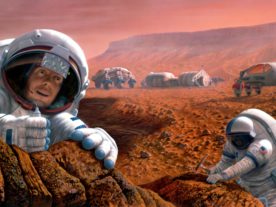







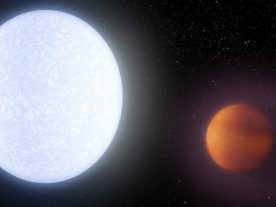
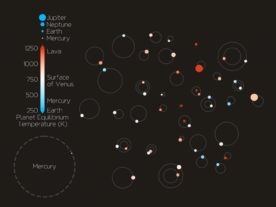



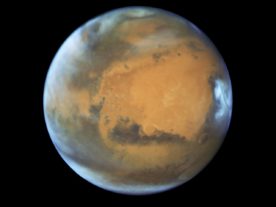
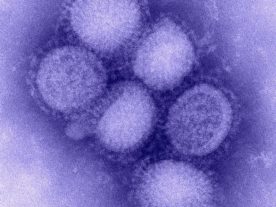


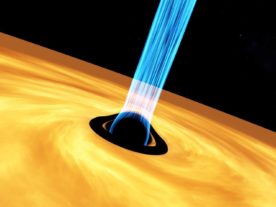

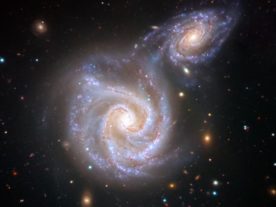
Mankind has studied the Universe for billions of miles in every direction, and we have yet to discover even the most distant of possibilities of the existence of life anywhere. Whether or not we are alone only makes the survival of the species relevant again. If we remain on the Earth until we are choking on each others existence, we will have squandered our only chance to colonize the heavens, and assure the survival of not only the species, but life.
Mars is not the only possibility, but the only one that makes sense now. We must strive to create a completely independent and self sustaining colony while the possibility still exists. Through the manipulation of DNA, a shopping cart of the organisms needed is available. The laboratories and manufacturing facilities that will be developed on Mars will provide us the competition needed to breed excellence.